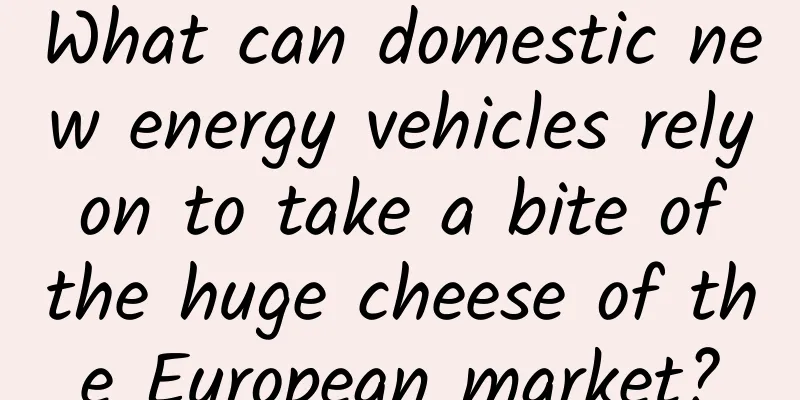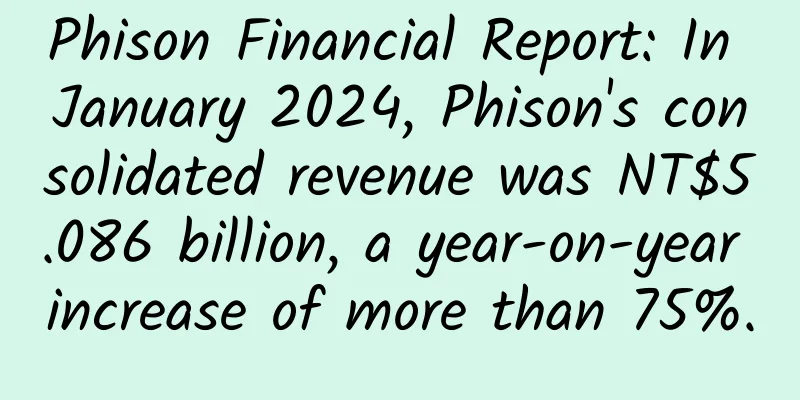What can domestic new energy vehicles rely on to take a bite of the huge cheese of the European market?

|
For quite a long time, domestic automobile manufacturers who wanted to open up overseas markets had to rely more on investment, acquisition, joint ventures and other means, and it was difficult to export their products abroad. Once upon a time, the most sensational news about domestic cars going overseas was probably that a wealthy man spent 30,000 US dollars to transport the "national god car" Wuling Hongguang to the United States. In the era of fuel vehicles, domestic manufacturers are facing decades or even hundreds of years of accumulation of technology and brand power by European, American and Japanese automakers, and are obviously lacking in competitiveness. Therefore, domestic cars can only take root in China. According to the 2019 automobile export and overseas sales data released by the China Association of Automobile Manufacturers, SAIC ranked first with only 350,000 vehicles, and Chery, Dongfeng, and BAIC ranked behind it with less than 100,000 vehicles. But with the rise of new energy vehicles, this situation is likely to change. Next stop: EuropeAt this year's Shanghai Auto Show, Wuling Hongguang once again attracted everyone's attention and announced that it would export its latest convertible model to Europe. According to foreign media reports, Latvian car dealer Dartz announced that it will sell the Linghongguang MINI EV convertible version in Europe and rename it Freze Froggy EV, with a starting price of 20,000 euros, or about 156,100 yuan. In the perception of Chinese people, most models of Wuling Hongguang are priced below 50,000 RMB, so it is surprising to see the news that the price of Freze Froggy EV is over 150,000 RMB. In fact, the price of 20,000 Euros does not mean that Wuling Hongguang wants to impact the mid-to-high-end market overseas. In the European market where the price of new energy vehicles generally exceeds 30,000 Euros, "cost-effectiveness" is still the main competitive advantage of this product. Wuling Hongguang is not the only domestic new energy vehicle that will be launched in Europe. BYD, Weilai, Xiaopeng and other brands have also begun to expand overseas. Unlike a number of domestic mobile phones that have been very successful overseas, domestic new energy vehicles have not focused on developing the Asian, African and Latin American markets, but have directly set their sights on the more economically developed Europe. Diamond TheoryIn 1990, Michael Porter of Harvard Business School proposed the "Diamond Theory" in international trade competition. He summarized the four major factors and two major variables in industrial development. The four major factors are: demand conditions, related support and industry, enterprise structure and domestic competitors, and production factors. The two major variables are government policies and development opportunities. The four major factors have a two-way effect on each other, forming a diamond system. Based on this model, we can try to analyze the strategic prospects of domestically produced new energy vehicles in Europe. A proven cost-effective trickAccording to data from market research firm EV Sales, in 2020, sales of new energy vehicles in Europe reached 1.367 million, up 142% year-on-year, accounting for 43% of the global market share. Data company Marklines predicts that by 2025, sales of new energy vehicles in Europe will reach 4.567 million. Whether looking at the current scale or potential, Europe is undoubtedly the largest new energy vehicle market. The demand for electric vehicles in Europe is mainly affected by policies: According to EU regulations, in 2020, the average carbon dioxide emissions of 95% of new cars in the EU must not exceed 95 grams per kilometer (equivalent to 3.24 liters of fuel consumption per 100 kilometers). In 2021, this standard will cover all new cars, and manufacturers that exceed the emission standards will face heavy fines; the British government announced that it will completely ban the sale of fuel vehicles in 2030. On the other hand, in order to encourage the development of new energy vehicles, European countries have also formulated subsidies of varying degrees for the purchase and use of new energy vehicles. Driven by the policies of various governments, buying electric cars has become the best or even the only choice for many Europeans. However, the relatively high price of electric cars still makes many people hesitate. According to surveys, the price of electric cars is generally 15,680 euros more expensive than fuel cars, which is about 123,000 yuan. Even if electric cars do not need to bear high oil prices, the huge difference in initial costs still makes many people hesitate. Research by the British Automobile Association shows that most car owners still think that electric cars are too expensive. Currently, the top 20 electric models in Europe are generally priced at more than 30,000 euros. It can be seen that cost-effective models still have a considerable market in Europe, and this is exactly the field in which Chinese manufacturers excel. In China, new energy models with a price of less than 200,000 yuan and a range of over 600 kilometers have appeared. A senior executive of BYD, which has already entered the Norwegian market, also said: "Many products in Europe are sold at a relatively high price. Our Chinese products exported there have a greater price advantage than their products of the same level." In addition, Chinese consumers have a wide range of consumption levels, from mid-to-high-end models to the most basic commuter models, which has a considerable market share. This also allows domestic manufacturers to obtain more diverse feedback and launch the most suitable products for different groups of people. This experience in dealing with various consumer groups will also be of great use in the process of automobile exports. China, the world's factory for new energy vehiclesAutomobile is a global industry, and a car may contain parts from several countries. If the core parts supplier and the car manufacturer are from the same country, it will naturally help the two to communicate and cooperate, thereby enhancing their competitiveness. my country has several large electric vehicle battery manufacturers. CATL has supplied batteries to international giants such as Tesla, BMW, Honda, and Mercedes-Benz, and Guoxuan High-tech has also reached a strategic agreement with Volkswagen. In addition to batteries, many important systems of new energy vehicles, such as thermal management, relays, chassis, and central control, are also made by domestic suppliers. For example, Tesla's localization rate has risen from 0% to 70%. In addition, with the development of 5G technology, technologies such as vehicle networking and autonomous driving will inevitably play an important role in the field of new energy vehicles. China's 5G technology is in a leading position in the world, which will naturally help domestic smart car manufacturers to develop faster in related fields. VIVO, a domestic mobile phone manufacturer, once proposed to tell its suppliers about its design concepts and requirements, so that suppliers can promote the development of technology based on vivo's ideas and requirements. If domestic smart car manufacturers can also reach a similar cooperation model with domestic suppliers, it will undoubtedly help improve their competitiveness in the international market. Competition drives manufacturers to develop new technologiesIf domestic smart car manufacturers want to succeed overseas, they also need to face fierce competition in the local market. According to incomplete statistics, there are more than 60 domestic new energy car brands, among which the best ones such as Weilai, Xiaopeng, and Ideal have successfully listed, and other brands are not far behind. Traditional car companies have also increased their investment in the field of new energy vehicles. No company can sit back and relax. What cannot be ignored is that the competition among Internet companies will also extend to the field of new energy vehicles: Tencent and Alibaba have invested in Weilai and Xiaopeng respectively, while Xiaomi and Baidu have decided to build cars themselves. The combination of the Internet and cars will inevitably give birth to new technologies. Fierce domestic market competition helps manufacturers launch new products and develop new technologies, thereby improving their overall competitiveness. Talent is the ultimate competitivenessIn Porter's "Diamond Theory", production factors are divided into high-level and low-level. Low-level production factors refer to various resources, while high-level production factors refer to technical facilities, talent reserves, R&D investment, etc. Many domestic new energy vehicle companies have maintained a high level of R&D investment. According to NIO's 2020 financial report, the company's annual R&D investment was 2.487 billion yuan, accounting for 15% of its annual operating income. Ideal Auto and Xiaopeng Motors invested 1.099 billion yuan and 1.725 billion yuan in R&D in 2020, respectively, accounting for 11.62% and 29.52% of their operating income. In comparison, the R&D investment of foreign brands such as Volkswagen, Mercedes-Benz, BMW, and Honda usually accounts for 4%-6%. In addition, my country has also begun to train talents for new energy vehicles. The National Battery Industry Professional Grade Evaluation (Primary/Intermediate/Senior) Training organized by the China Electronic Energy Conservation Technology Association, the China Green Supply Chain Alliance Battery Committee, and the China Electronic Energy Conservation Technology Association Battery Committee was held this year. Shanghai has also issued a plan to allow new energy talents to settle down. Sufficient R&D investment and solid talent pool will also be an important part of improving the competitiveness of domestic new energy vehicles. Unstable factors that cannot be ignoredAs mentioned earlier, one of the main reasons for the broad prospects of the European new energy vehicle market is policy, but for domestic manufacturers, policy is also the biggest destabilizing factor in their development in Europe. At present, EU countries have generous subsidy policies for new energy vehicles. Take Germany as an example. Buying a pure electric car with a total price of less than 40,000 euros can get a subsidy of 6,000 euros. At present, the subsidy policies of European countries do not restrict the origin of vehicles, but in the future, if the subsidy scope is narrowed to models produced in Europe, the price advantage of domestic models will no longer exist. This also requires domestic brands to improve the comprehensive strength of their products and reduce their dependence on subsidy policies. Heading to Europe, looking to the worldThrough the "Diamond Theory", we can see the core competitive advantages of domestic new energy vehicles in Europe:
The above advantages show no signs of fading in the short term. Therefore, there are reasons to be optimistic about the development prospects of domestic new energy vehicles overseas. Of course, in the European market, domestic brands still face fierce competition from a number of European local brands such as Renault, Volkswagen, and Audi. Everything has just begun. On April 30, the International Energy Agency (IEA) said that by 2030, the number of electric vehicles, buses, vans and heavy trucks worldwide is expected to reach 145 million. Faced with such a huge potential market, no new energy vehicle manufacturer will stand still. Europe may only be the first stop for domestic new energy vehicles to go overseas. As a winner of Toutiao's Qingyun Plan and Baijiahao's Bai+ Plan, the 2019 Baidu Digital Author of the Year, the Baijiahao's Most Popular Author in the Technology Field, the 2019 Sogou Technology and Culture Author, and the 2021 Baijiahao Quarterly Influential Creator, he has won many awards, including the 2013 Sohu Best Industry Media Person, the 2015 China New Media Entrepreneurship Competition Beijing Third Place, the 2015 Guangmang Experience Award, the 2015 China New Media Entrepreneurship Competition Finals Third Place, and the 2018 Baidu Dynamic Annual Powerful Celebrity. |
Recommend
User Operations | Analyzing Common Patterns of User Operations
In the Internet age, whoever wins the users wins ...
The king of comfort, lightness and no burden, Sony LinkBuds is both "sweet" and novel!
As a world-class audio equipment manufacturer, So...
"The rumbling of the chariots and the neighing of the horses" is the majestic first chariot of the Han Dynasty.
The Ziyang Bronze Chariot is an outstanding repre...
IBM: State of Salesforce report
IBM has released a new report, "The State of...
How to optimize Baidu OCPC?
How to optimize Baidu OCPC ? This problem has nev...
SAIC Volkswagen once again has a strange product strategy: increasing the size of the central control screen to try to save the sales of the Phideon
The Audi A6L has always been a mid-size car with ...
Growth hacking in action
The Internet is the most disruptive engine in mod...
Mr. Da Zhou's "Main Behavior Logic Training Camp"
Resource introduction of Mr. Da Zhou's "...
I am neither a turtle nor a stinky lady. Cover your eyes and guess who I am?
Flowers smile to birds, frogs sing to willows, wa...
What is the operation process of selling goods through live streaming on Douyin? How to make money by live streaming on Douyin?
This article mainly introduces the operation proc...
Things Android phone users should avoid
Every friend who owns an Android phone, please no...
Nanjing SEO training: haste for success, blind collection and large-scale release of external links are taboos in SEO operations
In fact, the operational threshold for SEO is rel...
Experts reveal the truth about 9 major rumors about osteoporosis
Medical data show that 50% of osteoporosis patien...
10 efficient methods to convert new users into first orders
Attracting new users is one of the most troubleso...
Do 4S stores need to certify Douyin Blue V? How to get Blue V on Douyin?
As a representative of short video platforms, Dou...









